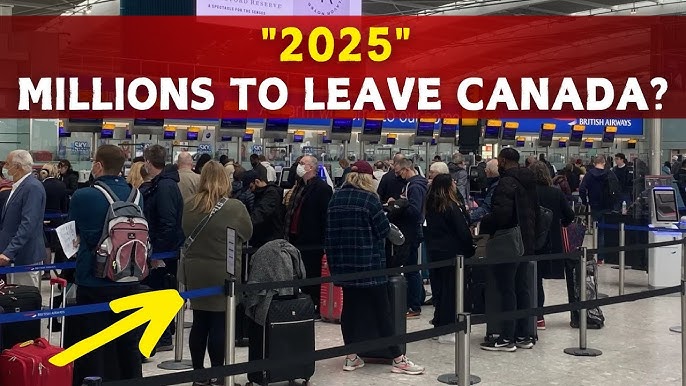Canada Tightens Immigration Rules for 2025: What You Need to Know
Canada to Reduce Immigration Targets and Tighten Rules in 2025
Ottawa, ON — The federal government has unveiled significant changes to Canada’s immigration policies for 2025, including lower targets for permanent residents (PRs) and temporary foreign workers (TFWs), stricter eligibility requirements, and reduced intake of asylum claimants. These measures are intended to alleviate pressures on housing and social services while addressing public concerns about immigration management.
Lower Immigration Targets:
For the first time since the pandemic, Canada’s annual intake of immigrants will decline:
- Permanent Residents (PRs): Targets will drop to 395,000 in 2025, down from 500,000. This figure is set to decrease further to 365,000 by 2027.
- Non-Permanent Residents (NPRs): The NPR population will be reduced by nearly 445,000 annually for the next two years, aiming to stabilize at 5% of the total population by 2027.
Focus on Economic Immigration:
IRCC’s revised plan emphasizes economic immigration:
- Over 40% of new PRs in 2025 will already reside in Canada as NPRs.
- Economic immigrants will comprise the majority, followed by family sponsorships and refugees.
- French-speaking PRs outside Quebec are expected to grow to 10% of total admissions by 2027.
Stricter Rules for Temporary Workers and Students:
The government is implementing tighter controls on temporary workers and international students:
- Spouses of international students and workers will face stricter work permit rules, with eligibility tied to high-demand or high-skill sectors.
- New language and program-specific requirements will limit post-graduation work permits, reducing totals by 175,000 over three years.
- Caps on low-wage TFWs and stricter regional unemployment criteria are expected to shrink program participation.
Adjustments for International Students:
- Study permit caps have been introduced, lowering approvals to 437,000 in 2025, with further reductions expected.
- Graduate students must now meet provincial or territorial attestation requirements.
- Authorized students may work off-campus up to 24 hours weekly during academic terms.
Changes for Asylum Seekers and Refugees:
- Refugee admissions will fall to 58,350 in 2025, with further reductions planned.
- Private refugee sponsorships are temporarily paused to address application backlogs.
Impact on Short-Term Visas:
- Multiple-entry visas are no longer routinely issued for 10 years; visa officers will determine duration and terms on a case-by-case basis.
- Visitors must now leave Canada before applying for work permits.
Addressing Housing Concerns:
The government anticipates these changes will help reduce Canada’s housing supply gap by 670,000 homes by 2027. “Immigration and housing have become deeply interconnected issues in the public eye,” said Michael Donnelly, a political science professor at the University of Toronto.
Public Reaction:
Prime Minister Justin Trudeau acknowledged the challenges of balancing immigration and domestic needs: “We could have acted quicker, but these changes will ensure our system works better for everyone.”
As Canadians prepare for a federal election, immigration policy is set to remain a key issue in national debates, with critics calling for further clarity on implementation and long-term impacts.

